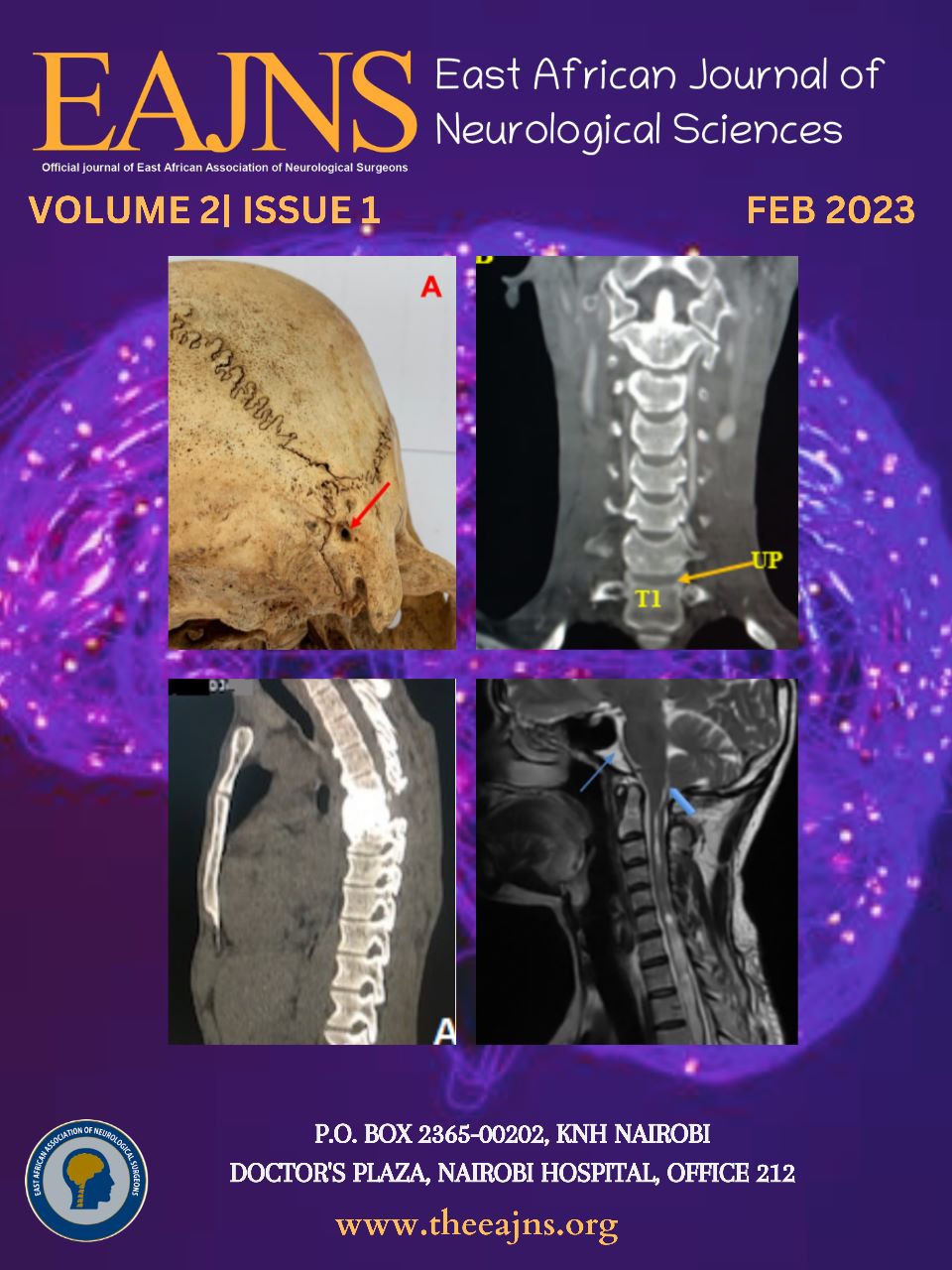Main Article Content
Ventral carotid canal dehiscence in a Kenyan population: An osteological study
Abstract
Background: The ventral surface of the carotid canal has previously been reported to be incomplete. Knowledge of this is important in the prevention of iatrogenic injuries during skull base procedures involving the petrous internal carotid artery and in the repair of carotid canal stenosis and fractures. Data on the prevalence of ventral carotid canal dehiscence locally remains scarce. Methods: 98 dry-sexed skulls were used to check for the presence of ventral carotid canal dehiscence. Data was analyzed using SPSS (Version 25.0) and frequency tables generated. Chi-square tests were used to assess associations with respect to side and sex. A p-value of ≤ 0.05 was considered significant. Results: Ventral (exocranial) dehiscence was present in 19.4% of skulls, with male skulls more likely to be dehiscent (p = 0.04). Minor dehiscence in the form of fissures was observed in 12.2% (24/196 sides), while holes were observed in 1.5% (3/196 sides). The rarer major dehiscence was not observed in this study. Bilateral dehiscence was observed in 8.2% (19 skulls). Conclusion: The ventral carotid canal was incomplete in 19.4% of Kenyan skulls. Procedures around the skull base should be done with caution to avoid inadvertent hemorrhage and vasospasm of the petrous internal carotid artery.







